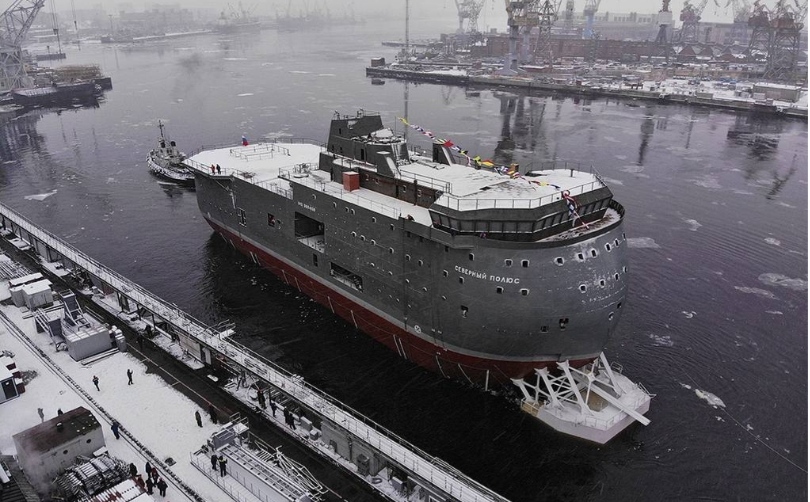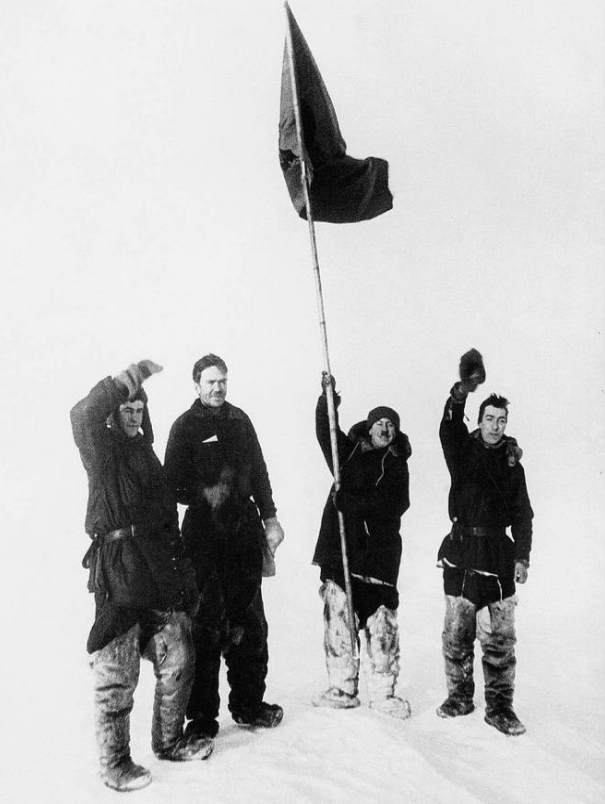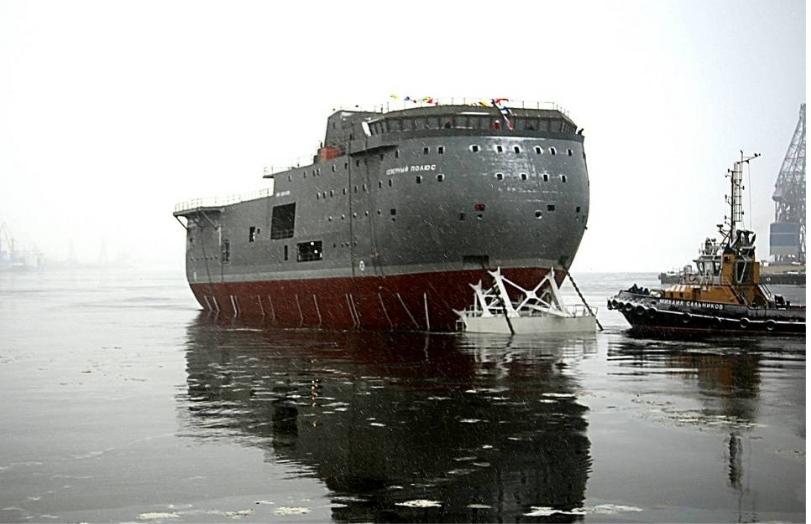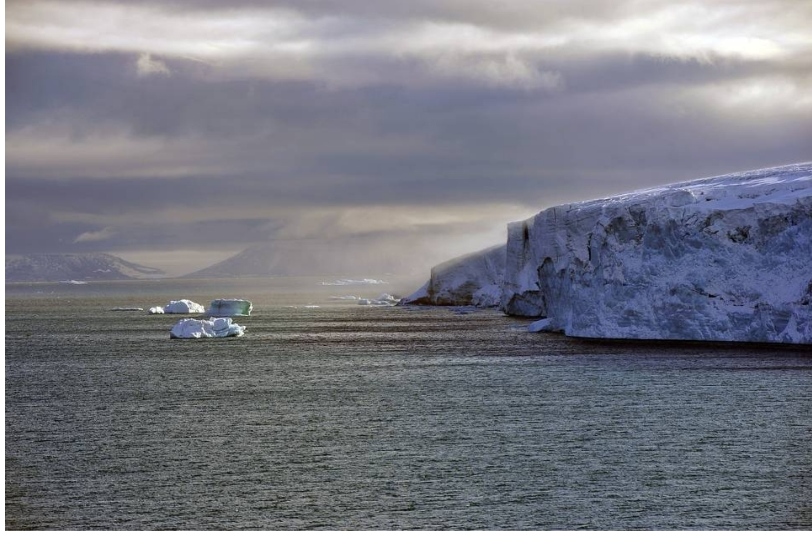How North Pole ice-resistant platform changes polar sciences
The story is about how Russia builds a follower of the Soviet stations, what discoveries will be made using it, and why drifts are helpful in Arctic studies

85 years ago, the USSR ensign was flown on the North Pole – the famous Papanin expedition. The expedition, where explorers worked onboard the first in the world drifting station – the North Pole, – began in 1937.
For almost 80 years, till 2013, Soviet and Russian drifting stations were crossing the Arctic Ocean. Our story is about how Russia builds a follower of the Soviet stations, what discoveries will be made using it, and why drifts are helpful in Arctic studies.
In the fur country
Back in the USSR, the conquering of the Arctic was not less in terms of scale and attention than the first flight into the space. Any kid in the USSR was aware of Otto Schmidt – a legendary polar explorer, a hero of the expedition onboard the Chelyuskin.
It was Schmidt’s idea to make a drifting scientific station. However, this statement may be argued by admirers of … adventure stories! In 1873, Jules Verne published The Fur Country, where he told a story of a British expedition on drifting ice. Could the pioneer of science fiction, Jules Verne, imagine that in some 60 years such drifting ice stations would be realistic?
They were real. On June 6, 1937, the world’s first drifting station, North Pole – 1, began working on a big ice about 20km away from the North Pole. Over nine months, the station, managed by Ivan Papanin, crossed more than 2,000 km of the Arctic Ocean.
The first station brought a number of interesting scientific results and confirmed the USSR’s status of the first Arctic country. The station’s team members – Ivan Papanin, Evgeny Fedorov, Ernst Krenkel, Petr Shirshov and their devoted dog Veselyi (‘joyful’ in Russian) – were awarded and their names remain in the history of the global science.

Petr Shirshov, Ernst Krenkel, Ivan Papanin and Evgeny Fedorov
The number of North Pole stations was forty. “From 1950, drifting stations kicked off practically every year. Scientific equipment was brought to the ice fields, and module towns grew there. However, quite often, the ice cracked, and evacuations were very expensive; plans got ruined, and expensive scientific equipment got lost,” Director of the Arctic and Antarctic Research Institute (AARI, St. Petersburg) Alexander Marakov said.
In 2013, scientists said it was practically impossible to find ice of good size and reliability due to the global warming in the Arctic. The North Pole – 40 expedition was evacuated in emergency, and the last station, North Pole – 2015, was able to last for only 114 days. This is how the legendary history of drifting stations finished on August 9, 2015.
Reviving the legend
When the stations were not working, any data on atmosphere, ocean and ice conditions in the Arctic could be obtained from satellites only. However, deep understanding of the changes in the Arctic requires “field” studies – from the inside. Russia has managed to find a solution.
In 2018, the national hydrometeorology service, Roshydromet, and the Admiralty Shipyards inked an agreement on building of an ice-resistant self-propelled platform. In St. Petersburg began the building of a huge vessel with numerous laboratories onboard. The platform will join the fleet of the Arctic and Antarctic Research Institute.
The building has been completed by 95%. The plan is that in September, 85 years after the first expedition on drifting ice, scientists will start a new expedition.
“The expedition’s first stage will continue to February – March. We hope to test and adjust all the processes. The second stage will be longer,” the institute’s director said.
The plan is the platform will sail to the Arctic, where it will be frozen into suitable ice. The explorers will organize around the platform a scientific camp, and in case of an emergency that camp could be wrapped up promptly and studies would continue onboard.
Unique approaches
Being special is never easy, and being the world’s only ice-resistant self-propelled platform carrying a unique complex of laboratories is even less easy. Such a vessel requires most up-to-date technologies.
The research institute’s director stressed many technical solutions, used in the platform’s building, are Russian, and they do not have analogs in the world. “Here is an example: the platform has a propulsive complex (the power complex of a vessel, consisting of the hull, engine, shafts and propellers), which gives the required self-sufficiency,” he said. “Foreign companies have been unable to offer such a solution. This work has been done by Russia’s MSS Company. The platform’s self-sufficiency is high: it may drift for two years and after that period of time to return to port on its own
Onboard the platform, scientists will survey air, water and permafrost conditions. All the studies will be conducted at modern laboratories, which, according to the director, will be 15. The platform will become a key element uniting the Russian scientific-research Ice base Cape Baranov, the Russian scientific center on the Spitsbergen Archipelago, and the Tiksi hydrometeorology observatory. Scientists will be able to conduct studies of the Arctic’s entire natural environment.
The work on expedition’s program and the list of participants is underway. At a time, on the platform will work 34 scientists and 14 crew members. Sergey Nesterov, who has been working in the Arctic and Antarctic for 12 years, has been appointed the platform’s Captain. Main research works are due at the expedition’s second stage – from April, 2023. At that stage, scientists from other countries may participate in the expedition, the institute’s director added.
“Far away from pole…”
Work on drifting stations is truly tough and dangerous. Historians say, the most complicated expedition was in 1962 – North Pole 11. Because of a crack in the ice, for more than six months planes were unable to land at the station, and had to drop onto the ice the food stock and letters from the mainland.
“Far away from pole, where flows the ice,
We live and work without surprise,
But at times the heart beats fast
If waiting for her letters for too long does last.”
This verse’s author is Vladislav Piguzov – a member of the 11th expedition. Back then, scientists managed to return safely to the mainland, despite all the problems. They had conducted a great number of studies. During North Pole – 41 expedition on the ice-resistant self-propelled platform, the scientists will use most up-to-date equipment, they will stay in comfortable cabins.
Presently, on the platform continue works to make accommodation and staff cabins. Specialists are installing equipment at scientific laboratories, lay cables and test engineering facilities. The platform will have a gym with workout equipment.
“In July, the platform will be ready and it will be handed over to the client – Roshydromet. The North Pole ice-resistant self-propelled platform will be a demonstration of Russia’s technical and scientific potential and it will become a leading scientific platform in the Arctic latitudes for a decade to go. The 80-meter platform’s water displacement is about 11,000 tonnes. The term is at least 25 years,” the director said adding specialists forecast the platform would be able to work smoothly for almost 40 years.
The platform would sail to the Northern waters without icebreakers. It will get on its own to the assigned destination, which is a big advantage. One of the decks will have a heli pad, which may be used, when necessary, by Mil Mi-8 and Mi-38 helicopters.
Science for economy
So, why is this platform so important to Russia? According to Makarov, in addition to the unique geology, chemistry, gravitation studies, which may be conducted exclusively in such “drifting” conditions, the platform may have an impact on the economy. The explorers will be able to work in the Arctic year-round, and they will make more accurate ice forecasts for the Northern Sea Route.
“We would be able to assess how the climate changes influence the ice sizes and we would be able to make better ice forecasts for safe navigation along the Northern Sea Route, to investigate ice loads and the mechanics of ice destruction in modern conditions, to conduct ecological and biological monitoring of the Arctic Ocean,” the scientist said.

© Arctic and Antarctic Research Institute press service
It is impossible to explore the ice cover without serious field experiments, he added. The Northern Sea Route is used for summer deliveries for 20 million people [living] in the Far North, and the deliveries’ success depends directly on high-quality ice forecasts.
“More accurate forecasts require deep knowledge of physical processes in the ice cover, in the ocean, with which it interacts, in the atmosphere, which affects it significantly,” he explained. “Research on the platform will allow us to develop and deepen this knowledge, to create models that reproduce the dynamics of the ice cover — its building up, melting — and other processes. Thus, they will contribute to improving the forecasts’ quality.””
Another equally important task is to collect data to structure the Northern Sea Transit Corridor. It is a global project of a transport-and-logistics system for international sea transportation between Asia and Europe along the Northern Sea Route. The scientists will collect necessary data using the unique platform.
Harsh though fragile region
The interruption of drifting stations meant great losses both for the Russian and international sciences. Is it realistic to discover the Arctic by using only static Arctic stations and satellites?
No, scientists say. The platform is essential now that the global warming has been affecting all the spheres of life.

The platform will be very important for the climate changes’ studies, the expert continued. The consequences from the climate changes are most evident in the Arctic than elsewhere. The thawing millennial permafrost, the changes in ocean currents… The Arctic is full of mysteries. The data on its natural environment is the base, which Russian meteorologists use to prepare forecasts important for various sectors of the economy, when they make global climate models and weather forecasts.
From the drifting observatory, specialists will monitor the biggest part of the Arctic basin, they will receive precise scientific data on natural processes in the Earth’s northern polar regions.
When studying the Arctic nature, it is important not to harm the ecology of this harsh though fragile corner of the planet. The platform has been designed specifically for the organization of drifting stations. Therefore, the used technologies, for example, eliminate the thermal or magnetic background of the vessel. The platform will go on an expedition using fuel with improved ecological properties – with minimal impacts on the Arctic Ocean’s ecosystem.
The expedition program will be most diverse. The scientists will work in shifts. They will return to the mainland by helicopters.
“The North Pole platform will bring the Arctic studies to a new level,” AARI’s director said. “Its enforced structure and the sailing independence expand the list of possible scientific tasks. Scientists will receive results of better quality, and the work of people in the severe Arctic conditions will be much safer.”




